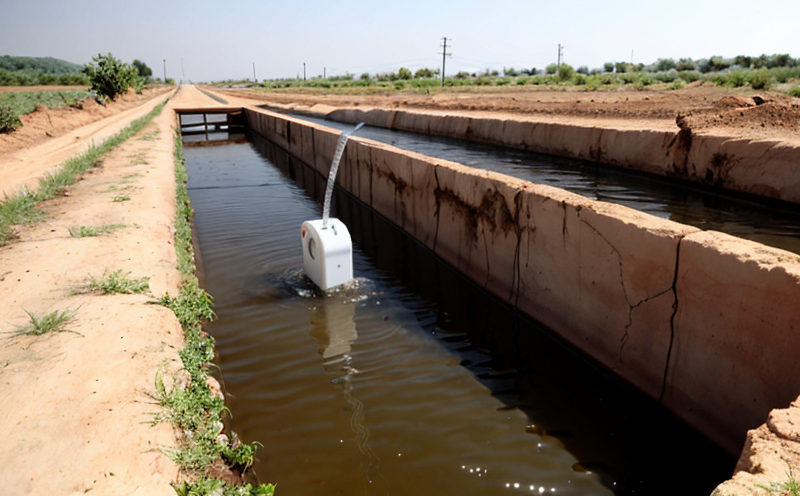ASTM D5907 Major Cations and Anions in Water Testing
The ASTM D5907 standard test method is widely recognized as a crucial tool for the mining sector. This procedure focuses on quantifying major cations (such as calcium, magnesium, sodium, potassium) and anions (like chloride, sulfate, nitrate, bicarbonate) in water samples. Such testing is essential for quality management, compliance, and research within the mining industry.
Water quality is a paramount concern in mining operations due to its direct impact on environmental sustainability, equipment longevity, and worker safety. The presence of certain cations and anions can indicate potential issues such as acid mine drainage (AMD), which results from the oxidation of sulfide minerals. AMD, characterized by low pH levels, high metal concentrations, and elevated sulfate content, poses severe risks to both the environment and infrastructure.
The ASTM D5907 method employs ion chromatography—a sophisticated analytical technique that enables precise measurement of ions in solution. This approach ensures accurate quantification even for trace amounts of these compounds. The process involves collecting water samples from various points within a mine site, ensuring proper preservation through the addition of nitric acid and refrigeration.
Following sample collection, the procedure requires thorough preparation before analysis can begin. This includes filtering the samples to remove particulates that might interfere with the chromatographic separation. After filtration, the samples are analyzed using an ion-selective electrode or a combined conductivity cell coupled with a suppressed conductivity detector for ion chromatography systems.
The results of ASTM D5907 testing provide critical insights into water quality, helping operators make informed decisions regarding treatment processes and environmental management strategies. For instance, understanding the concentration levels of specific ions allows for targeted interventions aimed at reducing AMD impacts or optimizing reagent usage during water treatment.
Understanding these parameters also supports compliance with regulatory requirements set forth by organizations like the Environmental Protection Agency (EPA) and international standards bodies such as ISO. By adhering to these guidelines, mines can ensure they are operating sustainably while minimizing their ecological footprint.
The importance of accurate monitoring cannot be overstated; deviations from expected values may necessitate immediate action to prevent broader environmental damage or operational disruptions. Continuous monitoring ensures that any changes in water chemistry are promptly addressed, thereby safeguarding both the environment and human health.
Why It Matters
The quality of mine water directly influences several key aspects of mining operations including safety, efficiency, and environmental impact. Accurate identification and quantification of major cations and anions are vital for maintaining optimal conditions throughout the entire lifecycle of a mine.
For instance, monitoring sulfate levels helps predict and mitigate AMD risks early on. Early detection allows for preventive measures such as installing neutralization systems or employing chemical treatments to manage metal ion concentrations effectively. This proactive approach not only protects natural water bodies but also reduces maintenance costs associated with dealing with AMD later in the mine's life cycle.
Moreover, understanding sodium and chloride levels informs decisions about waste disposal methods. Excessive salinity can lead to soil degradation and plant death if released untreated into nearby ecosystems. Therefore, precise quantification ensures that effluent discharge meets stringent environmental regulations.
The results of ASTM D5907 testing also play a crucial role in the design and optimization of water treatment plants within mines. By knowing exactly what needs to be removed or reduced in the incoming water stream, engineers can tailor their designs more effectively, resulting in more efficient operations overall.
Applied Standards
The ASTM D5907 test method is based on internationally recognized protocols designed to ensure consistent and accurate measurement of major cations and anions in water samples. This standard has been adopted by numerous regulatory bodies worldwide, including the EPA.
The methodology outlined in ASTM D5907 specifies procedures for collecting, preparing, and analyzing mine waters using ion chromatography. It details the necessary equipment, reagents, and steps required to achieve reliable results. Compliance with this standard ensures that laboratories providing these tests adhere to rigorous quality control measures.
It is important to note that while ASTM D5907 provides comprehensive guidance for conducting analyses, individual facilities may need to adapt certain aspects of the protocol depending on their specific requirements or local conditions. However, deviations from the standard should be documented thoroughly and justified scientifically.
The use of such standardized methods enhances comparability between different sites and facilitates communication among stakeholders involved in mining projects globally. It promotes consistency across various phases of project development—from initial exploration through closure and post-mining land use planning.
Environmental and Sustainability Contributions
The application of ASTM D5907 for major cations and anions testing contributes significantly to environmental stewardship within the mining sector. By providing detailed information about water quality parameters, this test helps minimize adverse effects on local ecosystems.
One significant benefit is reduced risk associated with acid mine drainage (AMD). Early detection through regular monitoring allows mines to implement preventive measures that can mitigate AMD before it becomes a severe problem. This proactive approach preserves nearby aquatic habitats and reduces the need for costly remediation efforts later.
Another positive outcome of accurate water quality assessment is improved decision-making related to waste management practices. Knowing precisely what elements are present in mine effluents enables better selection of disposal sites that do not pose risks to surrounding areas. Additionally, it supports decisions about whether or not certain materials should be recycled rather than discarded.
Furthermore, compliance with environmental regulations is facilitated by consistent application of ASTM D5907 standards. This ensures that all mining operations adhere uniformly to legal requirements regarding water discharge quality. Such uniformity fosters trust among regulators and enhances the reputation of responsible mining practices worldwide.





